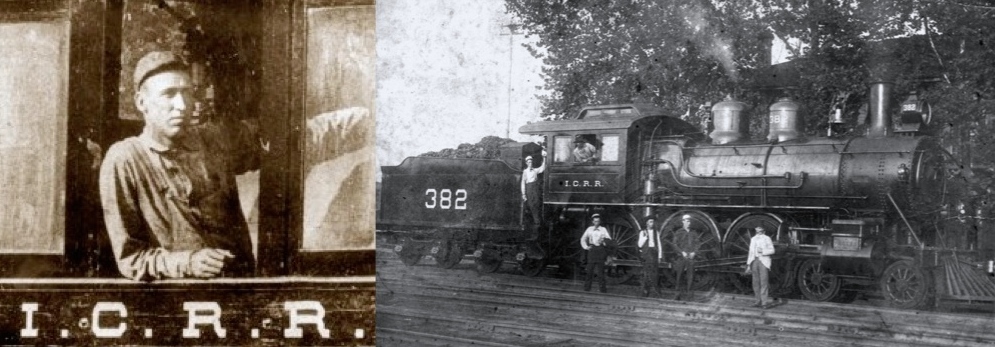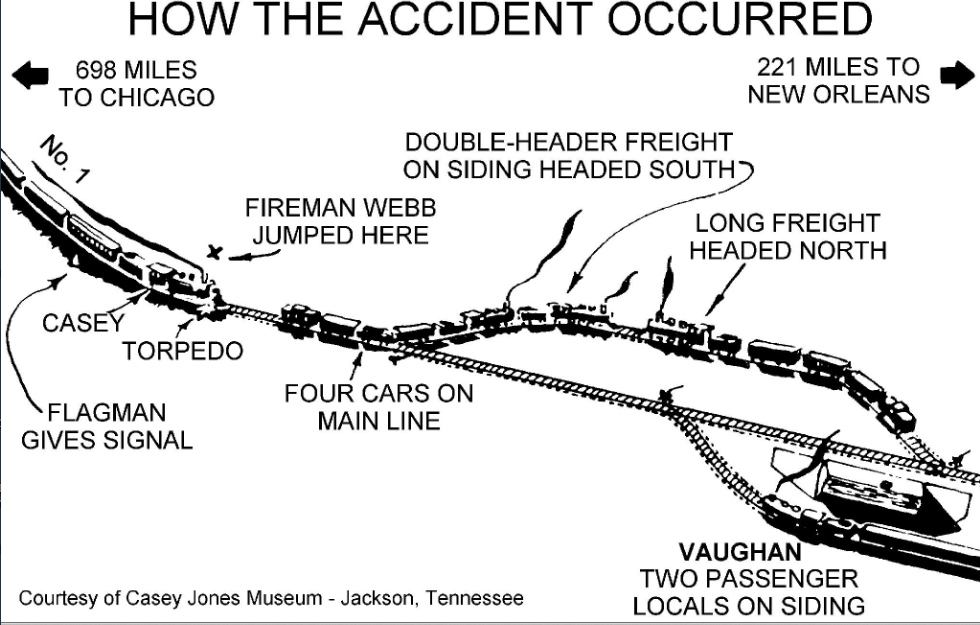April 30, 1900 - Casey Jones

Casey Jones (1863 - 1900) Illinois Central Railroad Locomotive No. 382 (4-6-0)
On April 30, 1900, at 3:52 AM a south bound passenger train crashed into four cars of a freight train.
Jonathan Luther "Casey" Jones was born in Missouri in 1863 and in 1876 moved to Cayce, Kentucky. At age 15, he left home for Columbus, Kentucky to work for the Mobile and Ohio Railroad as a telegrapher and later as a brakeman and fireman.
Jones moved to Jackson, Tennessee, still working for the Mobile and Ohio. When asked by a fellow railroad man where he was from, Jones said he was from Cayce, Kentucky and the nickname "Casey" was born.
In 1888, he was hired by the Illinois Central Railroad. On February 23, 1891, Casey was promoted to engineer and was later assigned to passenger runs between Memphis, Tennessee, and Canton, Mississippi, a run of about five hours. This was one link of a four train run between Chicago and New Orleans.
On the morning of April 29, 1900, Jones pulled into Memphis from Canton where he was to lay over until the next day. The regular engineer who was to make the night run was ill so Casey agreed to take his place. Engine No. 382, with Jones in the cab, departed about an hour and a half late.
Casey Jones was known for his insistence that he 'get there on the advertised' time and when he got to Vaughan, Mississippi he was only a couple minutes late. Two freight trains were on a siding but their combined length was longer than the siding. As they attempted to clear the main track an air hose on No. 72 broke, locking the brakes and leaving four cars of No. 83 extending onto the track at the north end.
When Sim Webb, Casey's fireman, saw the caboose on the track he jumped from the cab, but Casey did not. Some say Casey Jones stayed with his engine because of his sense of duty and the value he put on human life. Jones died in the accident, but no other person was killed or seriously injured.
Wallace Saunders, who worked in the Canton roundhouse, wrote a tune remembering Casey that became a favorite of fellow workers. Bert and Frank Leighton, a couple of vaudeville performers, spread the "Ballad of Casey Jones" across the country. The song was copyrighted in 1909. In the 1930s, a book, a motion picture and a radio series added to the legend. In 1962, Johnny Cash released his version of "Casey Jones".
The official accident report said the 'Engineer Jones was solely responsible having disregarded the signals given by Flagman Newberry'. Until his death in 1957, Sim Webb, Casey's fireman, maintained that 'we saw no flagman or flare, we heard no torpedoes'.
Note: A torpedo is a small device placed on a rail and makes a loud sound when the wheel of a train passes over it.


 Share Article
Share Article